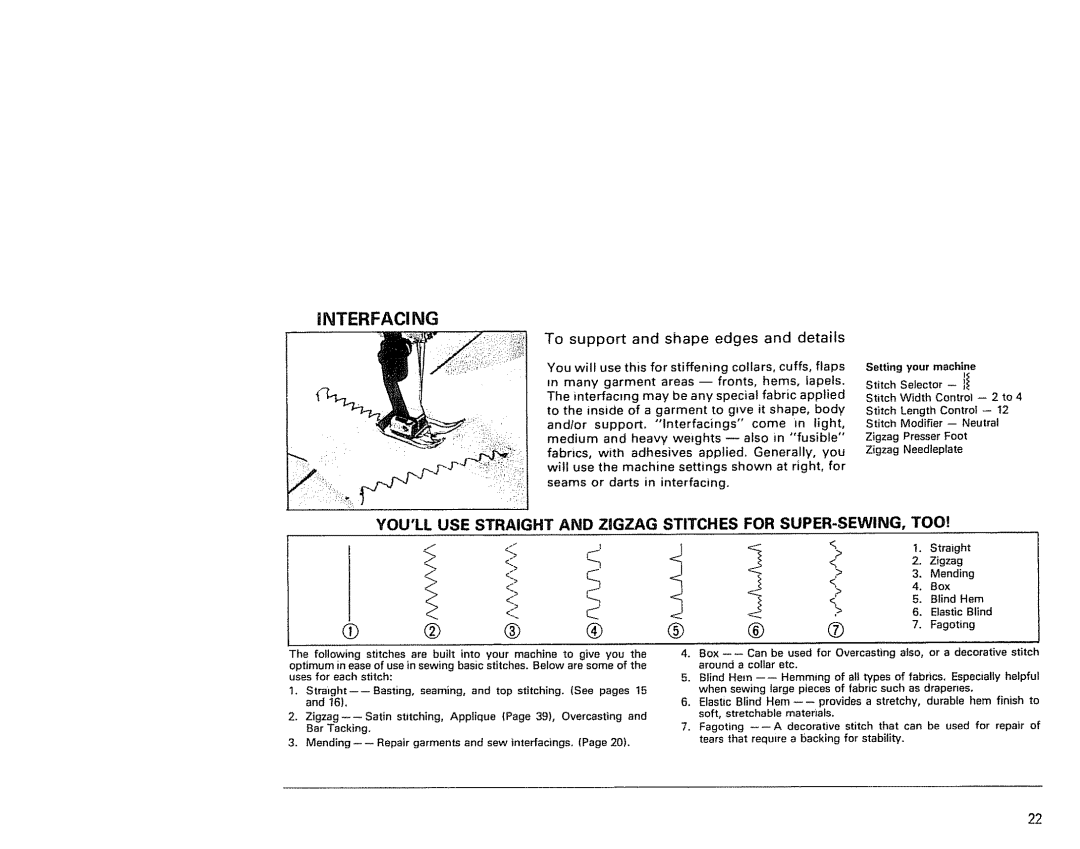
iNTERFACING
I
To support and shape edges and details
You will use this for stiffening collars, cuffs, flaps m many garment areas
and/or support. "'tnterfacings" come m light, medium and heavy weaghts w also in "fusible" fabrics, with adhesives applied, Generally, you will use the machine settings shown at right, for seams or darts in interfacing.
Setting your machine
_
Stitch Selector
Stitch Width
Stitch Length Control
Stitch Modifier
Zigzag Presser Foot
Zigzag Needleplate
YOU'LL USE STRAIGHT AND ZIGZAG STITCHES FOR
|
|
|
|
|
| 1. | Straight | |
|
|
|
|
|
| 2, | Zigzag |
|
| %> |
|
|
| <' | 3. | Mending | |
|
|
|
| 4. | Box |
| ||
|
|
|
|
|
|
| ||
|
|
|
|
|
| 5. | Blind | Hem |
|
|
|
|
|
| 6. | Elastic | Blind |
® | ® | ® | ® | ® | ® | 7. | Fagoting | |
|
|
| ||||||
The following stitches are built into your machine to give you the
optimum in ease of use in sewing basic stitches. Below are some of the uses for each stitch:
t.
and 16).
2.
Bar Tacking.
3.
4.Box
5.Blind Hem
6, Elastic Blind Hem
soft, stretchable materials.
7.Fagoting
22
